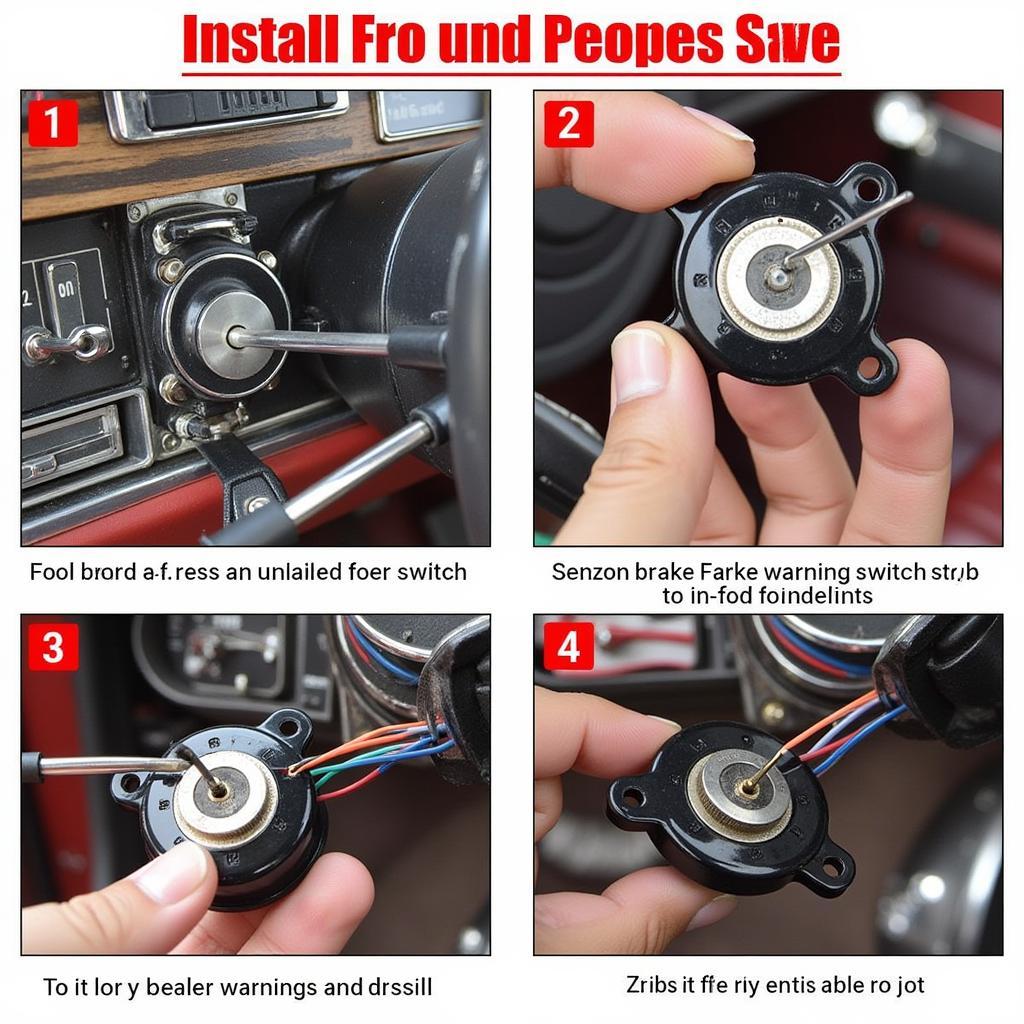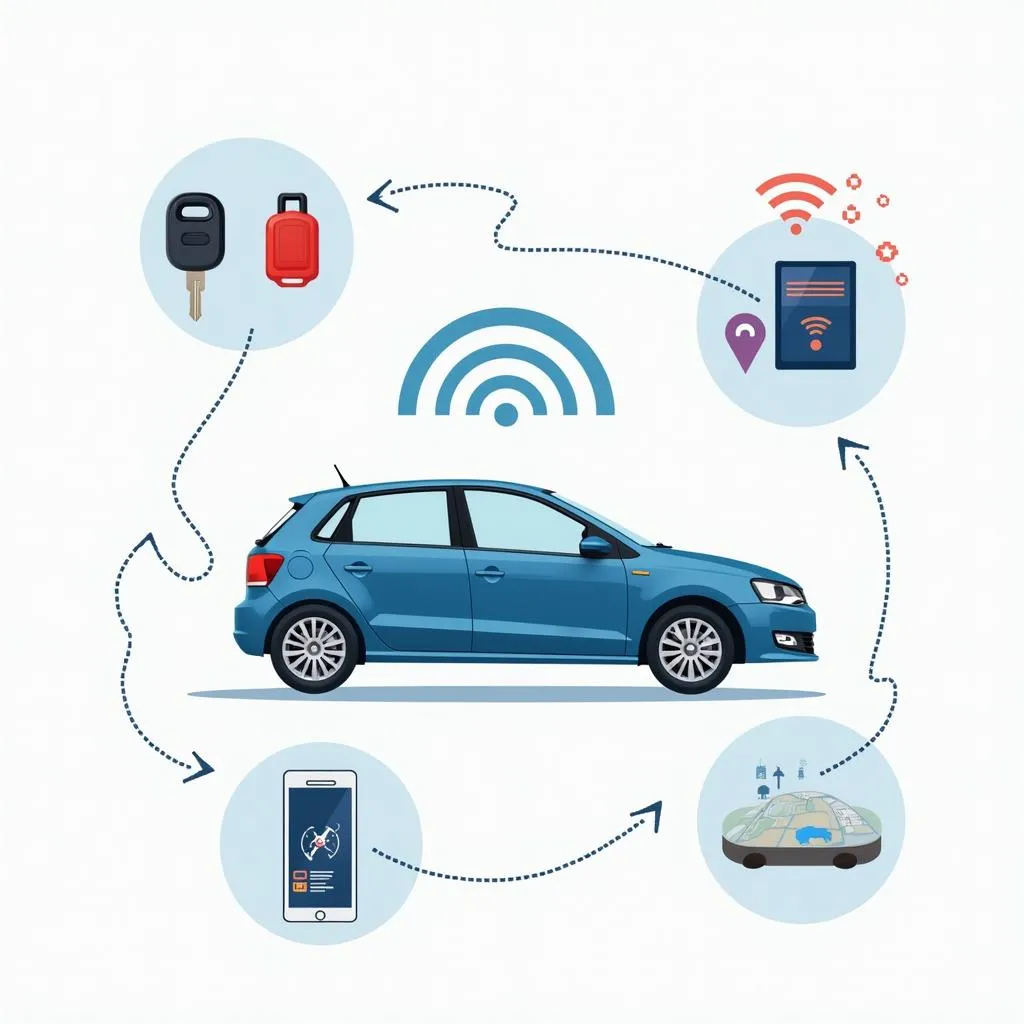The brake warning light on your E30’s dashboard is a crucial safety feature. When illuminated, it signals a potential issue within your braking system that requires immediate attention. Ignoring this warning could lead to reduced braking performance and increase the risk of accidents. This comprehensive guide delves into the common causes of an illuminated E30 brake warning light and provides step-by-step solutions to help you diagnose and address the problem.
Understanding Your E30’s Brake Warning Light System
The E30, like most vehicles, utilizes a straightforward brake warning light system designed to alert the driver of potential issues. Two main scenarios typically trigger the brake warning light:
- Low Brake Fluid Level: The most common culprit is a drop in brake fluid level. This usually indicates a leak in the system or worn brake pads.
- Activated Parking Brake: If your parking brake is engaged, even slightly, the warning light will illuminate. This serves as a reminder to disengage the parking brake before driving.
Common Causes of an Illuminated E30 Brake Warning Light
While a low brake fluid level or engaged parking brake are the most frequent triggers, several other issues can cause the E30 brake warning light to illuminate:
- Worn Brake Pads: As brake pads wear down, the brake caliper pistons extend further to compensate. This action draws more brake fluid from the reservoir, eventually triggering the warning light.
- Brake Fluid Leak: A leak anywhere in the brake system, including brake lines, hoses, calipers, or the master cylinder, will result in fluid loss and illuminate the warning light.
- Faulty Brake Master Cylinder: The brake master cylinder is responsible for pressurizing the braking system. If it malfunctions, it can lead to a loss of pressure and potentially trigger the warning light.
- Malfunctioning Brake Warning Light Switch: In some cases, the brake warning light switch itself may be faulty, causing the light to illuminate even if no actual braking system problem exists.
Troubleshooting an E30 Brake Warning Light
Before you begin, ensure your E30 is parked on a level surface and the engine is off.
-
Check Your Parking Brake: Begin with the simplest solution. Ensure the parking brake is fully disengaged. If the light remains on, proceed to the next step.
-
Inspect Brake Fluid Level: Locate the brake fluid reservoir in your E30’s engine bay. The reservoir is typically a translucent plastic container with “DOT 3” or “DOT 4” markings. Check the fluid level against the minimum and maximum markings on the reservoir.
-
Add Brake Fluid (If Necessary): If the fluid level is low, carefully remove the reservoir cap and add the appropriate DOT-rated brake fluid.
-
Inspect for Leaks: Carefully examine all brake lines, hoses, and components for any signs of leakage. Pay close attention to areas around the wheels and under the vehicle. A leak will appear as wetness or dripping fluid.
When to Seek Professional Help
If you’ve checked the above and the brake warning light persists, it’s crucial to seek professional assistance. Issues such as brake line leaks, master cylinder malfunctions, or faulty brake components require specialized tools and expertise to diagnose and repair safely.
Expert Insight:
“Attempting to diagnose or repair complex brake issues without the proper knowledge and tools can be dangerous,” warns Jake Carter, a seasoned automotive technician with over 20 years of experience specializing in European vehicles. “Brakes are critical to your safety, and even a seemingly minor issue can escalate if not addressed correctly.”
Preventative Maintenance for a Healthy Braking System
Regular maintenance is key to preventing brake system issues and ensuring optimal performance:
- Regular Brake Inspections: Schedule a comprehensive brake inspection with a qualified mechanic at least once a year or every 12,000 miles.
- Timely Brake Fluid Flushes: Brake fluid absorbs moisture over time, which can reduce its effectiveness and potentially damage brake components. Flush your brake fluid according to your E30’s service schedule.
- Address Warning Signs Promptly: Never ignore any unusual noises, vibrations, or changes in brake pedal feel.
Conclusion
The brake warning light in your E30 is a critical safety feature that should never be ignored. By understanding the common causes and taking the appropriate troubleshooting steps, you can address many issues yourself. However, always remember that your safety is paramount. If you encounter a complex brake problem or are unsure about any aspect of brake repair, it’s best to seek professional assistance from a qualified mechanic.


